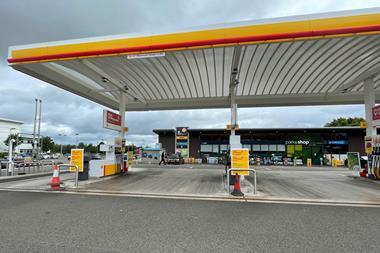A new study looking at the attitudes of fuel customers and why they choose particular brands, has underlined the growing dominance of the supermarkets. Customer intelligence specialist Market Force Information, surveyed more than 1,500 consumers across the UK in an effort to understand the choices made when purchasing fuel.
The finding that made the headlines, that Asda was the nation’s favourite petrol retailer, while not a surprise will have been a blow for the oil companies. However, it was the detail in the report that was far more worrying for them. It suggests the big four supermarkets are well ahead when it comes to winning the battle for consumer preference.
When the survey asked which brands consumers had used in the past three months, Tesco was a convincing winner with a score of 62.9% with Sainsbury’s in second place with 45%, and Shell just edged out Asda for third place with 41.2% and 41.1% respectively. Morrisons notched up 36.7% and BP was the only other oil company in the top six with 36.1%.
A dominant performance by the supermarkets is underlined when it’s noted that BP and Shell achieved their scores with more than 1,200 and 1,000 sites, while Tesco has far fewer at 500, Morrisons just over 300, Sainsbury’s 286 and Asda 223. These figures are further evidence of the huge sales notched up by the average supermarket site (more than 12mlpa) and a market share of around 50% with just 15% of the UK’s petrol filling stations.
Another big worry for the oil companies, which have invested millions of pounds over the years in developing their brands, is how little consumers buying fuel care about brands. When asked how important a petrol brand was when they chose where to fill up, two thirds (68%) said it was not important. Simon Boydell, global marketing manager at Market Force, says this shows how consumers’ views on supermarket fuel have changed over the years. Historically there was a suspicion that supermarket fuel was of poorer quality than branded fuel, but this has dispelled to a large degree and only 10% said fuel quality was important.
Next Market Force asked which was the consumer’s favourite petrol station and the supermarkets were even more dominant taking the top four spots with Tesco, Sainsbury’s, Asda and Morrisons scoring 25.9%, 16.3%, 14.1% and 13.7%. Shell, BP and Esso came in next with 12%, 7.6% and 3.7%. Adjusting the scores to take account of the number of sites produced the headline for Asda as number one, followed by Sainsbury’s, Tesco and Morrisons.
When the survey asked what factors influenced the choice of filling station, there was no surprise with the top two. Convenient location was most important being cited by 87.3%, followed by price at 70.4%.
However, when asked what made a brand their favourite (excluding location and price), the top choice with 37.7% was pay-at-pump facilities. Boydell says this reflects the growing importance of convenience. Pay-at-pump is popular with customers who do not want to queue up and pay in the shop, because it enables them to pass through the forecourt much more quickly.
When the survey asked for scores for customer satisfaction, and whether consumers would be willing to recommend a brand, the supermarkets nearly managed another clean sweep with Sainsbury’s coming top and pipping Asda, but Maxol managed to edge out Tesco for third place and Morrisons was fifth.
The report also looked at ways forecourt operators could improve customer satisfaction and found that the vast majority are missing out on the opportunity to obtain customer feedback. Only 3% of those surveyed said they were offered a chance to provide feedback on the service they received. However, 78% of those offered the opportunity went on to complete the survey suggesting consumers are happy to share their feedback if asked.
"There is a significant opportunity for petrol stations to increase their business by asking for customer input, and working on improving the customer experience based on that feedback," says Boydell. "Market Force has found that delighted customers are three times more likely to recommend a business to friends, compared to neutral consumers."
He added: "It’s no surprise to fuel brands that consumers care most about price, but what this research shows is that consumers also make decisions based on the service and products they receive at their favourite locations."
Overall the survey shows that the supermarkets have been better at getting their customer offer right than the oil companies and have been better at adapting to changing consumer needs such as the increased desire for convenience. The challenge now for the oil companies and the symbol groups increasingly sensing an opportunity in forecourts will be to look at what works best for the supermarkets, and see if they can add these elements into their offer. With the supermarkets ability to use petrol as a loss leader, they will always have a price advantage, but additional services and convenience will help operators to draw more consumers onto their forecourts.
Survey Demographics
The survey was conducted in June 2013 across the UK. Market Force Information says the pool of 1,593 respondents reflected a broad spectrum of income levels, and ages ranged from 18 to over 65. Approximately 47% were men and 53% were women.





























No comments yet